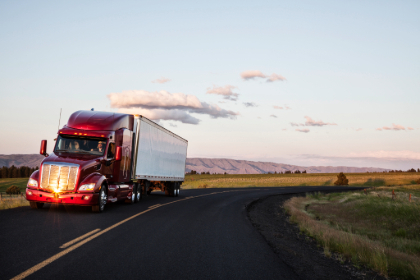INDEPENDENT DEALER
Fort Worth, TX & Southlake | (888) 459-9958 / (817) 431-6664
Ace Hi Oil
OUR BLOG
07/08/2025
Heavy-duty vehicles are more important than you may think. Each type is designed with a specific job in mind, and together, they keep our world functional. Learn all about the most popular types of heavy-duty vehicles with this post by Ace Hi Oil in Fort Worth, TX.

Heavy-duty vehicles are the workhorses of countless industries—from construction and agriculture to emergency services and long-haul transport. Built for strength, endurance, and specialized tasks, these vehicles keep our infrastructure running and goods moving.
If you’ve ever wondered what makes these machines so essential, here’s a look at some of the most popular types of heavy-duty vehicles and how they’re used in the real world.
Maintenance is a must when you drive a heavy-duty vehicle. Call Ace Hi Oil in Fort Worth, TX, at (817) 431-6664 or visit AMSOIL's online store to make sure your heavy-duty vehicle remains as strong and powerful as ever.
Popular Types of Heavy-Duty Vehicles
1. Pickup Trucks (Heavy-Duty Series)
Heavy-duty pickup trucks like the Ford F-250/F-350, Ram 2500/3500, and Chevy Silverado HD are designed to handle tough jobs without sacrificing mobility.
Common Uses:
- Towing trailers, boats, and equipment
- Hauling construction materials
- Mobile workstations for contractors or field technicians
Why They’re Popular:
They combine power and practicality. With advanced towing tech and diesel engine options, these trucks are great for both job sites and day-to-day driving.
2. Box Trucks / Straight Trucks
Box trucks are medium to heavy-duty vehicles with an enclosed cargo area. You’ve likely seen them used by moving companies, delivery services, and small logistics firms.
Common Uses:
- Furniture and equipment moving
- Retail and e-commerce deliveries
- Mobile workshops or service units
Key Features:
They’re easy to drive compared to tractor-trailers and can access tighter city streets—making them a favorite for urban businesses.
3. Dump Trucks
Dump trucks are essential in construction and landscaping. These trucks are designed to carry and unload loose materials like gravel, sand, and demolition debris.
Common Uses:
- Hauling construction debris
- Transporting raw materials like soil or rock
- Road work and grading projects
Types:
- Standard dump truck (rear discharge)
- Articulated dump truck (for off-road use)
- Side dump trucks (quicker unloading)
Their hydraulic lift systems make them incredibly efficient for transporting heavy loads and quickly clearing job sites.
4. Flatbed Trucks
A flatbed truck features a flat, open platform without sides or a roof—allowing for oversized or awkwardly shaped loads.
Common Uses:
- Transporting heavy machinery
- Carrying lumber, steel beams, or pallets
- Towing modular buildings or equipment
Why It’s Useful:
The open bed makes loading and unloading much easier, especially with cranes or forklifts. It’s highly versatile across many industries.
With AMSOIL’s full line of top-quality products for Heavy-Duty Diesel Equipment, you can count on your vehicle getting the work done. Place an order and start providing superior care for your powerful vehicle.
5. Utility Trucks / Service Trucks
Utility trucks are customized with storage compartments, racks, and built-in tools to support fieldwork for electricians, plumbers, linemen, and repair crews.
Common Uses:
- On-site equipment repairs
- Power grid maintenance
- Municipal or emergency services
Notable Features:
Often includes ladder racks, lift buckets, or mobile workshops—making them mobile command centers for trade professionals.
6. Semi-Trucks (Tractor-Trailers)
These long-haul champions haul freight across the country and are essential for large-scale logistics operations.
Common Uses:
- Freight and cargo delivery
- Food and beverage transport
- Industrial supply chain logistics
Why They Matter:
With the ability to carry over 80,000 lbs when fully loaded, semi-trucks are a critical part of the economy. Without them, store shelves would be empty.
7. Heavy Construction Equipment (e.g., Bulldozers, Backhoes)
While not trucks in the traditional sense, vehicles like excavators, bulldozers, loaders, and backhoes are indispensable for construction and land development.
Common Uses:
- Earthmoving and excavation
- Road building and grading
- Demolition and clearing debris
Important Note:
These are often transported to sites via flatbed trucks or lowboy trailers because of their size and operating restrictions on public roads.
8. Emergency and Municipal Vehicles
Heavy-duty ambulances, fire trucks, and snowplows serve communities in times of need and are designed for rapid response under pressure.
Common Uses:
- Emergency medical response
- Firefighting and rescue
- Snow and ice removal during winter storms
Why They’re Built Tough:
These vehicles need to be reliable, powerful, and equipped with specialized gear to operate in unpredictable and high-risk environments.
Call Ace Hi Oil in Fort Worth, TX, at (817) 431-6664 or visit AMSOIL's online store to purchase the products that will ensure your heavy-duty vehicle will continue to be your best companion through your work days.
CONTACT
Norman Rinehart
2900 Knight Ct
Southlake, TX, 76092
United States
United States
(888) 459-9958
(817) 431-6664